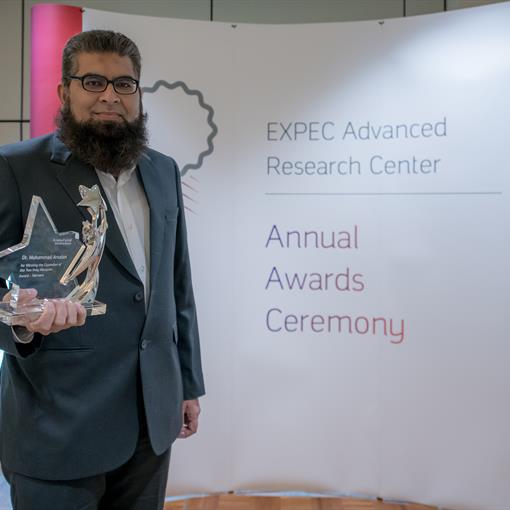
By Veronica E. Tremblay, 2019
“We wanted to create a product to help humanity.”
Dr. Muhammad Arsalan was working as a NASA postdoctoral fellow at the University of Maine when he was recruited to the KAUST Sensors Lab by Professor Khaled Salama. Arsalan and his longtime friend and colleague, KAUST Professor Atif Shamim, had been offered funding for their joint venture, VSM Technologies, by the KAUST Entrepreneurship Center.
While the company did not take off as hoped, they learned from the experience and have since continued on the path of innovation. Arsalan was the lead inventor on one of the first patents ever granted to KAUST (US Patent #8,519,345). To date, he has eight (8) granted US patents, several patents in other jurisdictions, and more than 25 patents pending.
“The experience I gained at KAUST made me the researcher and team leader I am today.”
When Arsalan arrived at KAUST in 2010, the university was only one year old. Since everything was so new, he had to assist with setting up equipment and facilities before he could perform the research work he was hired to do. In this way, he had the opportunity to gain experience in procurement and team building that would not have been possible at a more established institution. As the postdoctoral representative to the Saudi Arabia Alumni Chapter, Arsalan remains active in the KAUST community and continues to inspire current postdoctoral fellows by sharing his experience of working in industry and his passion for invention.
“I enjoy seeing the application of the things that I develop in real life.”
Arsalan has always felt that it is not enough to just study; his studies must have a practical application. In his current role at Saudi Aramco, Arsalan manages the multiphase metering, sensing and intervention team, which creates instrumentation and tools for oil and gas acquisition.
Some active projects in Arsalan’s team include autonomous untethered robots that can travel into an oil well to perform various tasks, a laserbox that uses a single fiber optic cable to simultaneously perform distributed temperature and acoustic sensing (DTS and DAS), and the wireless Thru-tubing Retrievable Intelligent Completion System (TRICS™), which allows for real-time production monitoring and control of any oil well.
Arsalan also participated on the development of a sensor with Prof. Shamim that accurately determined the proportion of water mixed in oil in real time. The sensor optimized oil production by enhancing the efficiency of the oil wells. The impact of this sensor was recognized with the highest honor for inventors in the Kingdom, the Custodian of the Two Holy Mosques’ Prize (“the King Prize”) honoring Inventors and the Gifted.
Dr. Muhammad Arsalan is a team lead in the EXPEC Advanced Research Center at Saudi Aramco. He was a postdoctoral fellow at KAUST from 2010 to 2013. His research interests include sensors and systems for energy, health care and automation industries.
Selected publications:
1. A. Shamim, M. Arsalan, L. Roy et al., "Wireless dosimeter: system-on-chip versus system-in-package for biomedical and space applications", IEEE Trans. Circuits Syst. II Express Briefs, vol. 55, no. 7, pp. 643-647, 2008. https://ieeexplore.ieee.org/abstract/document/4493407
2. Ouda M.H., Arsalan M., Marnat L., Shamim A., and Salama K.N.," 5.2-GHz RF Power Harvester in 0.18-/spl mu/m CMOS for Implantable Intraocular Pressure Monitoring", IEEE Transactions on Microwave Theory and Techniques, vol.61, no.5, pp.2177-2184, May 2013. https://ieeexplore.ieee.org/document/6495731
3. M. Arsalan, A. Shamim, L. Roy, M. Shams, "A Fully Differential Monolithic LNA With On-Chip Antenna for a Short Range Wireless Receiver", Microwave and Wireless Components Letters IEEE, vol. 19, no. 10, pp. 674-676, Oct. 2009. https://ieeexplore.ieee.org/abstract/document/5234040
4. M. Arsalan, "Ultra Low Power CMOS-Based Sensor for On-Body Radiation Dose Measurements", IEEE Jou. on Emerging and Selected Topics in Circ. and Sys., vol. 2, pp. 34-41, March 2012. https://ieeexplore.ieee.org/abstract/document/6170568